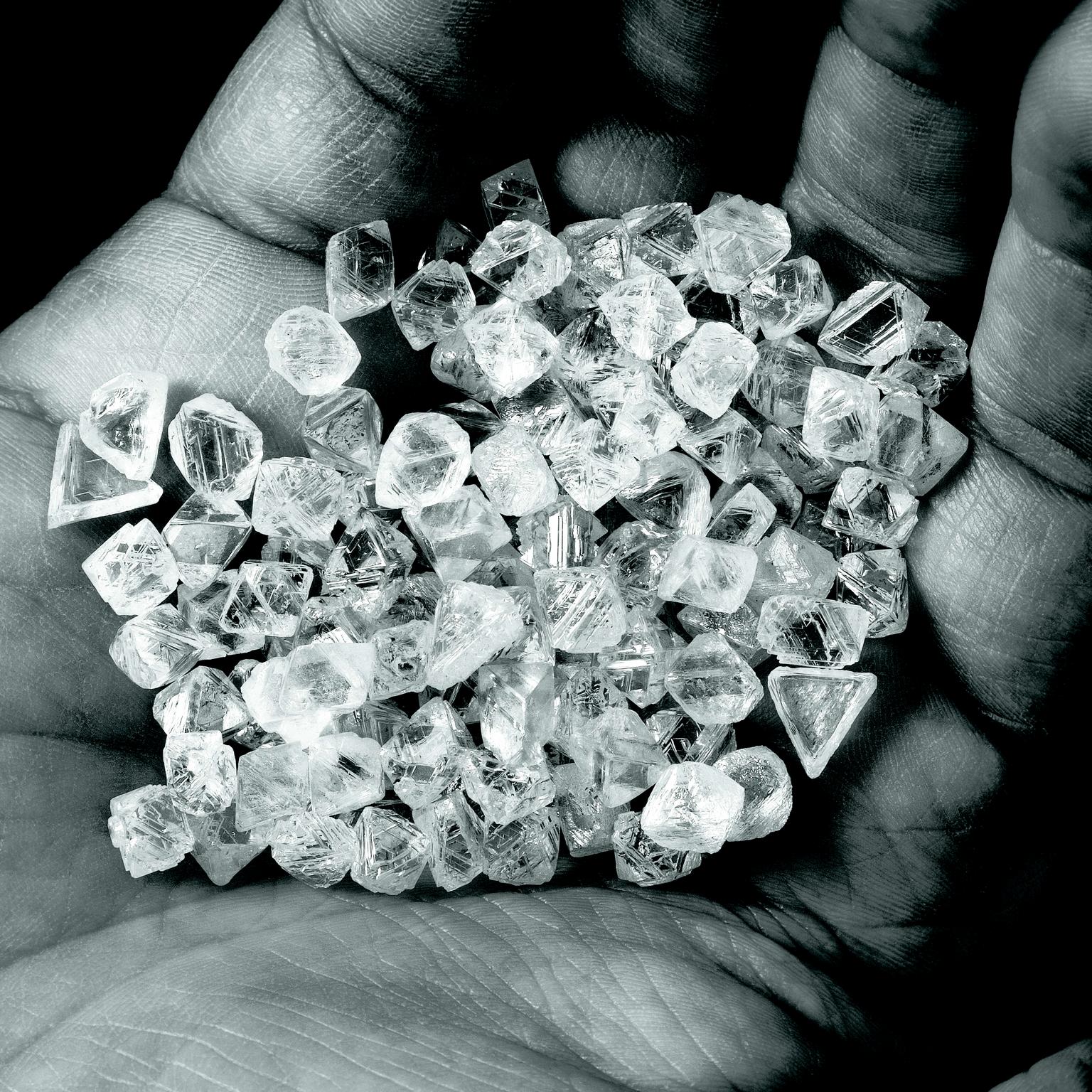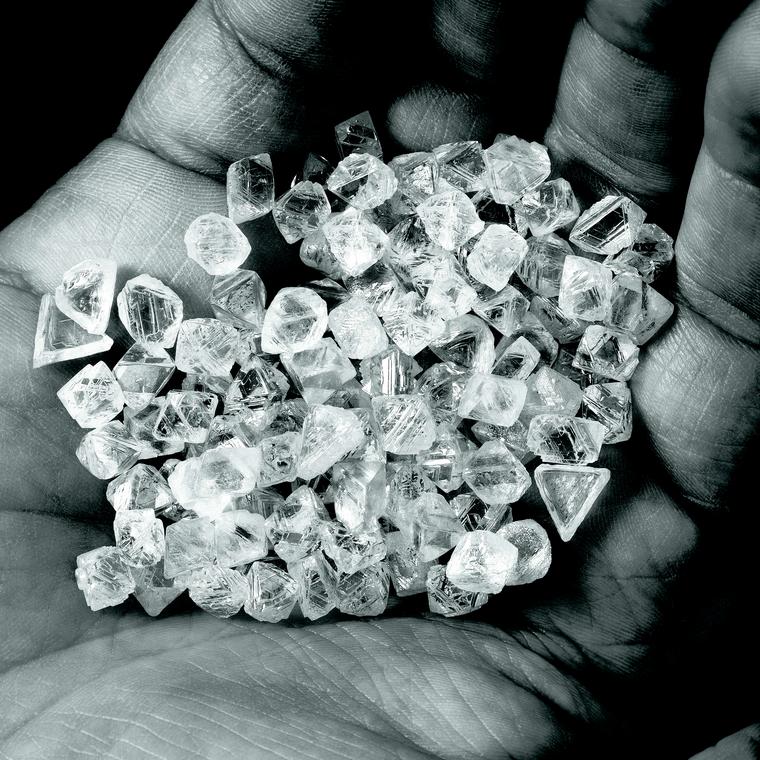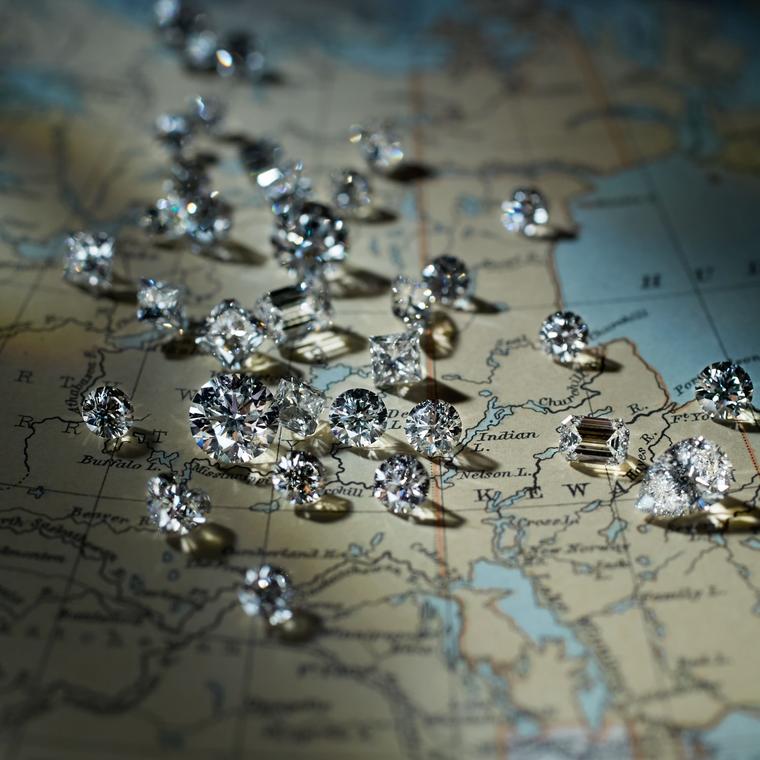
Total Clarity is based on a report by the independent agency TruCost that examines the socio-economic and environmental impact of large-scale diamond mining. The report was commissioned by the Diamond Producers Association (DPA) and it is the basis of the Total Clarity initiative. CEO of the DPA Jean-Marc Lieberherr along with Livia Firth, Co-Founder and Creative Director of Eco-Age, hosted a breakfast in London on 2 October 2019 to discuss the findings.
The timing of the report is no coincidence. The mining industry has faced the largest disruption to date in the form of lab-grown diamonds. One of the main claims by producers of lab-grown diamonds is that they have a significantly smaller carbon footprint. This message chimes with the current concern for environmental issues and the lab grown diamond producers are capitalising on this message. An independent, substantiated report is the DPA’s response that reveals amongst other facts, that 160 kgs of C02 are emitted per polished carat of mined diamonds compared to 511kgs of C02 for an equivalent lab-grown diamond.

What are the objectives of the Total Clarity report?
Jean-Marc Lieberherr explained that the aim of the report is: ‘to provide an unbiased objective view of our collective impact as seven companies running 35 diamond mining operations representing 75% of world production.’ Jean-Marc Lieberherr said that he hopes the report will correct some misconceptions: ‘some people are still stuck on an out-dated perception of what the diamond industry was around 15-20 years ago.’
Trucost is part of S&P Global, a leading independent analyst in carbon and environmental data based in London. Trucost describes itself as a company that: ‘…assesses risks relating to climate change, natural resource constraints, and broader environmental, social and governance (ESG) factors’. In other words, an independent, unbiased company put the DPA members’ impact under the microscope.

Who are members of the Diamond Producers Association?
The DPA was founded in 2016 to promote diamonds, taking over from where De Beers left off in 2007 when it stepped down from being the main promoter of the industry. DPA’s members represent the bulk of the major players: Alrosa, Dominion, De Beers Group, Lucara, Petra Diamonds, Rio Tinto and RZM, the majority owner and operator of Murowa Diamond Mines in Zimbabwe. Between them, their operations extend from South Africa to Australia, Russia, Canada and the USA. In the Total Clarity report, the 'Who we are' section states that: ‘the DPA and its Members are committed to transparency and to engaging with all stakeholders to explore ways to make the diamond sector ever more sustainable and responsible.’
What does Eco-Age do?
Eco-Age has been hired by the DPA and describes itself as: ‘…a sustainability communications consultancy. We work with a global roster of clients to build responsible business practices told through storytelling. We are currently working with The Diamond Producers Association to help address the perception of natural diamonds and how diamond mining can have positive effect on the communities that it supports.’
Read more about lab-grown diamonds here
What is the socio-economic and environmental impact of large-scale diamond mining?
Livia Firth opened by saying: ‘Recently we read the report by Trucost commissioned by the DPA which actually revealed some extraordinary facts … it started to unveil a lot of facts and also what actually took us even more by surprise, (was) on the environmental side, because as you know today there is a lot of talk about synthetic diamonds and that they are the eco-friendly version of real diamonds. At Eco-Age our duty is to be curious when there are these sort of claims ... so we went exploring and digging into these claims and what surprised us when we read the report was, that actually, these claims can be turned upside down, because from an environmental side, synthetic diamonds are environmentally very unfriendly. So we thought this is a very interesting subject and we should get everyone around the table and discuss this.’
Highlights of the Total Clarity report found that in 2016, DPA members created US$16 billion in net socioeconomic and environmental benefits of which nearly 60% flows back into local communities and benefits associated with the social programs, including health and education, totalled US$292 million.
It also states that DPA members’ employees and contractors on average are paid nearly 5 times the living wage in their country and they engage between them 77,000 employees and contractors. The total salaries and wages paid by DPA members created US$3.9 billion in direct and indirect benefits. The report says that modern diamond mining helps local communities thrive and the industry offers safe, high-quality, high-paying jobs.

Are lab-grown diamonds eco-friendly?
As for environmental factors, DPA members protect three times the land they use globally for mining. But most importantly, the estimated C02 emissions associated with laboratory grown diamonds are nearly three times greater than diamonds recovered by DPA members in 2016. While 160 kgs of C02 are emitted per polished carat of mined diamonds, it is small fry compared to the 511kgs of C02 for a lab-grown diamond. C02 emissions of lab-grown diamonds are high as they have to heat their ovens to 1,500º C, requiring large amounts of energy. These facts prompted the US Federal Trade Commission in April 2019 to send letters to eight companies warning them off describing their gems as eco-friendly.
Read more about ethical diamonds from the Canadian Diavik mine
So are some lab-grown diamond companies making unsubstantiated claims? Jean-Marc Lieberherr is clear in a post-event quote: ‘they (lab-grown diamonds) are effectively industrial replicas of a natural diamond, which require huge amounts of energy and water to produce as reactors have to be maintained at temperatures often exceeding that of the surface of the sun. No laboratory-grown diamond producer today uses renewable energy, in spite of what some are claiming, which explains their high carbon footprint.’
Will lab-grown diamonds hold their value or go down in price?
At the event Jean-Marc Lieberherr commented on the long-term value of lab-grown diamonds: ‘... I am a firm believer that eventually things settle and consumers get educated and they will see that it (a lab grown diamond) is very pretty but it doesn’t have any inherent value, that it is fine to adorn yourself…but it is not precious, it is not a precious stone, it is a very different proposition. Now there is a lot of confusion, but I think that it will dissipate as prices come down which is going to happen fairly soon as consumers get educated about the reality of how it is produced and the reality of its impact.’
What is small-scale diamond mining?
When asked about the other 15% of artisanal and small-scale mining, which accounts for the livelihood of 10 million people around the globe, Jean-Marc Lieberherr confirmed that DPA members are not involved in this sector. The Total Clarity report says that: ‘the global diamond industry is working closely with NGOs and governments to constantly improve working conditions and access to fair market conditions to artisanal diamond miners.’
Read more about Fairtrade and Fairmined gold here
These miners often work in dire conditions in the poorest parts of the world and some in conflict regions. Because of the convoluted and archaic supply chain where sources of diamonds - both industrial and artisan - are mixed and sold in lots. The exception to this is large diamonds or those such as the Canadian Diavik mine diamonds that are laser inscribed. So often the consumer has no way of knowing where exactly their stone came from. This flaw allows the producers of lab-grown diamonds to claim the high ground in terms of traceability. They can point to the machine in the corner that made the diamond.

Although the Total Clarity report confirms that: ‘Today, 99.8% of diamonds are certified by the Kimberley Process as conflict-free,' as long as the supply chain is not totally transparent and water tight, that 0.2% of natural diamonds is the weakest link that makes it all too easy for lab-grown diamond producers to use provenance as a marketing advantage and slam the entire natural diamond industry. It plays to the fact that most consumers are unaware that 85% of natural diamonds are mined industrially and don’t know the difference in the conditions in which these diamonds were extracted.
The report finishes with a statement of commitment from the DPA members: ‘The Total Clarity report focuses exclusively on the impact of DPA Members’ diamond mining operations and provides an important baseline for future reference as they commit individually and collectively to continuously reducing adverse impacts of their activities and maximizing local benefits.’
The industry is far from perfect and there is still much work to be done, particularly in helping artisanal and small-scale miners achieve better working conditions. But this is the first important step in helping to make the diamond industry as a whole, one where everyone involved is making a positive impact.











